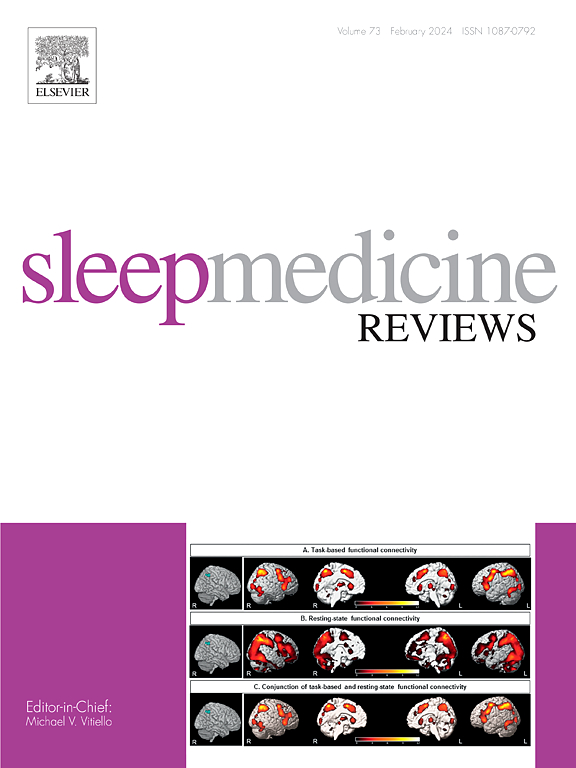Which individually-directed non‐pharmacological interventions are effective at improving sleep outcomes in shift workers? A systematic review of systematic reviews
IF 9.7
1区 医学
Q1 CLINICAL NEUROLOGY
引用次数: 0
Abstract
Shift work can result in sleepiness, increasing risks of accidents, absenteeism and illness. Systematic reviews have examined individually-directed non-pharmacological interventions (e.g., light therapy, napping) for shift workers, but the diversity of interventions, settings and review conclusions make it difficult to determine which interventions work. We conducted a systematic review of systematic reviews to appraise evidence for such interventions to improve sleep or reduce sleepiness in shift workers.
Six databases were searched and screened with good reliability. Two reviewers independently extracted data from all identified reviews, and a narrative synthesis was conducted.
Twenty-eight systematic reviews were included, containing 69 primary studies involving 4947 participants. Twenty-three reviews were critically low-quality. The most-investigated interventions were light therapy (n = 8 reviews) and napping (n = 7 reviews). High-quality reviews suggested inconclusive evidence for which interventions improved sleep quality, sleep quantity and subjective sleepiness in shift workers, although lower quality reviews indicated light therapy, napping, physical activity, dietary supplements, mobile health apps and mindfulness may be effective.
We have identified several promising interventions to improve sleep or reduce sleepiness in shift workers, although none met high-quality thresholds. More rigorous and high-quality trials should focus on these promising interventions.
哪些个人指导的非药物干预措施对改善轮班工人的睡眠结果有效?系统回顾的系统回顾
轮班工作会导致困倦,增加事故、旷工和生病的风险。系统综述已经检查了针对轮班工人的个体导向的非药物干预措施(如光疗、午睡),但干预措施、设置和综述结论的多样性使得难以确定哪些干预措施有效。我们对系统综述进行了系统综述,以评估此类干预措施改善轮班工人睡眠或减少困倦的证据。对6个数据库进行了检索和筛选,可靠性较好。两名评论者独立地从所有确定的评论中提取数据,并进行叙事综合。纳入28项系统综述,包含69项主要研究,涉及4947名参与者。23篇评论的质量极低。研究最多的干预措施是光疗(n = 8篇综述)和午睡(n = 7篇综述)。高质量的评论表明,没有确凿的证据表明干预措施可以改善轮班工人的睡眠质量、睡眠量和主观困意,尽管低质量的评论表明,光疗、午睡、体育活动、膳食补充剂、移动健康应用程序和正念可能有效。我们已经确定了一些有希望的干预措施来改善轮班工人的睡眠或减少困倦,尽管没有一个达到高质量的门槛。更严格和高质量的试验应该集中在这些有希望的干预措施上。
本文章由计算机程序翻译,如有差异,请以英文原文为准。
求助全文
约1分钟内获得全文
求助全文
来源期刊

Sleep Medicine Reviews
医学-临床神经学
CiteScore
20.10
自引率
3.80%
发文量
107
期刊介绍:
Sleep Medicine Reviews offers global coverage of sleep disorders, exploring their origins, diagnosis, treatment, and implications for related conditions at both individual and public health levels.
Articles comprehensively review clinical information from peer-reviewed journals across various disciplines in sleep medicine, encompassing pulmonology, psychiatry, psychology, physiology, otolaryngology, pediatrics, geriatrics, cardiology, dentistry, nursing, neurology, and general medicine.
The journal features narrative reviews, systematic reviews, and editorials addressing areas of controversy, debate, and future research within the field.
 求助内容:
求助内容: 应助结果提醒方式:
应助结果提醒方式:


